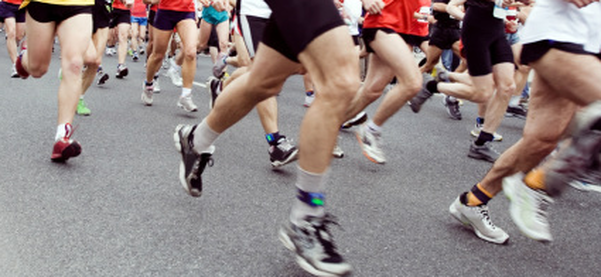You are probably reading this blog thinking you are almost due for a new pair of running shoes! Running shoes typically wear out after 600-800km. After this sort of mileage, the soft foam in your shoes will have compressed considerably and the shoe will no longer offer you the cushioning and support you require. Other reasons to update your running shoes could be uneven shoe wear or the presence of lower limb or foot pain.
As Podiatrists we are well equipped to recommend a running shoe based on your running style (heel striker or mid/forefoot striker), mileage per week and the type of event you are training for. A Podiatrist will look into your possible use of orthotics, lower limb and foot biomechanics as well as injury history when recommending a shoe. We may even conduct video running analysis. A good running shoe store can also help match a running shoe with your foot type; high arch, neutral or flat foot (pronated).
Neutral shoes are typically designed for more normal to high arch feet, whereas support running shoes are typically matched to those runners who pronate excessively. The pitch of a shoe (difference between the height of the heel and forefoot) is also an important factor that should be considered.
If you are training for an event (10km – Marathon) and are aiming to set a PB then it pays to have two pairs of shoes. One is a distance shoe (280-350g) that you complete 80% of your runs in. The second shoe, a lighter race shoe (230-280g) should be reserved for the remaining 20% of your shorter runs or speed work. By wearing your lighter race shoes 20% of the time you will prepare and condition your body and feet to the running shoe most suited for your event.
Your new running shoe should ultimately feel comfortable and fit really well. But if you need any help or direction in matching a running shoe to your foot type or have lower limb or foot pain then please call Active Podiatry for an appointment.
As Podiatrists we are well equipped to recommend a running shoe based on your running style (heel striker or mid/forefoot striker), mileage per week and the type of event you are training for. A Podiatrist will look into your possible use of orthotics, lower limb and foot biomechanics as well as injury history when recommending a shoe. We may even conduct video running analysis. A good running shoe store can also help match a running shoe with your foot type; high arch, neutral or flat foot (pronated).
Neutral shoes are typically designed for more normal to high arch feet, whereas support running shoes are typically matched to those runners who pronate excessively. The pitch of a shoe (difference between the height of the heel and forefoot) is also an important factor that should be considered.
If you are training for an event (10km – Marathon) and are aiming to set a PB then it pays to have two pairs of shoes. One is a distance shoe (280-350g) that you complete 80% of your runs in. The second shoe, a lighter race shoe (230-280g) should be reserved for the remaining 20% of your shorter runs or speed work. By wearing your lighter race shoes 20% of the time you will prepare and condition your body and feet to the running shoe most suited for your event.
Your new running shoe should ultimately feel comfortable and fit really well. But if you need any help or direction in matching a running shoe to your foot type or have lower limb or foot pain then please call Active Podiatry for an appointment.


 RSS Feed
RSS Feed